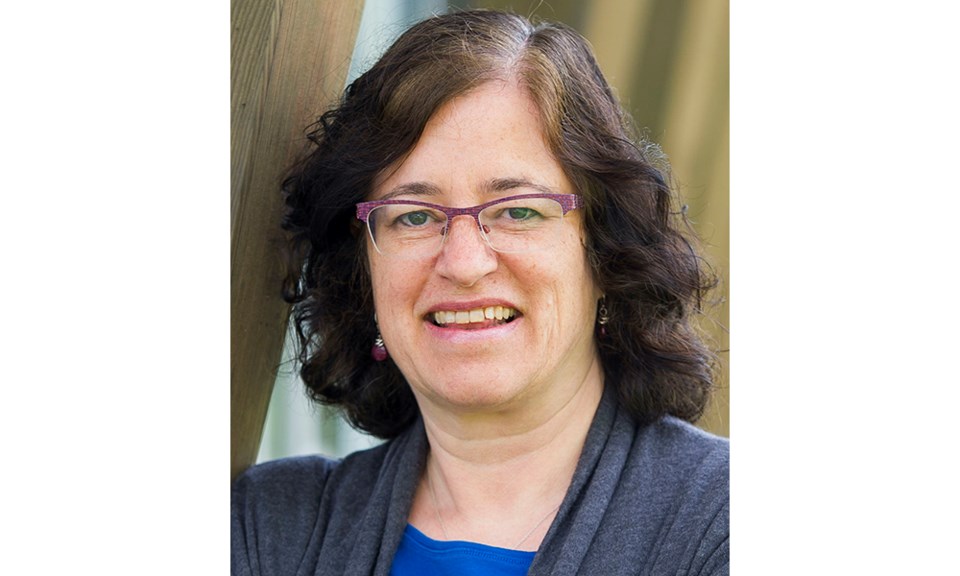It’s absolutely correct that keeping schools open must be a high priority, just as B.C.’s Provincial Health Officer Dr. Bonnie Henry has said.
But if we want to keep schools open, making sure they’re safe environments must rank even higher. One cannot happen without the other.
Closing schools isn’t good for children’s mental health. Anxiety, post-traumatic stress, depression and behavioural challenges for children all increased during the pandemic, a report funded by the B.C. Representative for Children and Youth found. Vulnerable kids, such as those from low-income families or racialized communities, have been disproportionately affected by school closures.
“School is essential, and we know it is the best place for children to be," said Henry. “We’ve also seen remarkable resilience and adaptability of our school communities and I know that is what is going to help us get through what will undoubtably be some rocky times in the next few weeks.”
B.C. Teachers’ Federation President Teri Mooring also wants to see schools stay open, but would also like to see additional measures, such as providing N95 masks, prioritizing teachers for vaccines and improving ventilation in schools.
“We think that every step that can be taken to ensure schools can stay open should be taken,” Mooring said. “We think the measures we are advocating for are reasonable and feasible.”
Dr. Henry has often said that schools are not a significant source of transmission, but Canada’s Chief Public Health Officer Dr. Theresa Tam said in an interview with CBC that K-to-12 and post-secondary schools were the source of significant transmission, along with sporting events.
Remember, children under five are not vaccinated and fewer than half of those aged five to 11 have had one dose in B.C. and none have had two. In other parts of the world, children’s hospitalizationsdue to COVID-19 are increasing.
Keeping schools safe will require the measures Mooring mentioned above and other measures like an updated health check that reflects Omicron symptoms, excellent communications about cases and outbreaks, and the use of rapid tests to screen for illness regularly.
Private companies, particularly in the film industry, screen their employees using rapid tests. Schools in other parts of the world regularly test children with rapid tests. Schools would have access to 500,000 rapid tests, but they will be used for teachers and students with symptoms, not to screen for asymptomatic cases, Dr. Henry said. That’s a shame because asymptomatic screening would help keep schools safer.
As of Jan. 7, the health check for K-12 students in B.C. is not updated to reflect the symptoms of Omicron, which are more often a congested nose, a phlegmy throat and a headache. The health check still asks if a student has a fever, chills, cough, loss of sense of smell or taste or difficulty breathing. I had COVID-19 in December and had none of those symptoms. To make schools safe, the health check will need to be updated and enforced.
Dr. Henry has said that Omicron’s rapid spread means it won’t be possible to send out notifications of exposures in schools as done in the past. Instead, school attendance will be a “proxy” for exposure notifications, said Education Minister Jennifer Whiteside. If attendance is lower than usual for this time of year, public health will step in to check for a COVID-19 outbreak and parents will be notified, Whiteside says.
A shift to home-based learning will be an assessment made by individual schools, based on their staffing levels, she says.
Very few details were given about what level of absenteeism might trigger public health getting involved.
“We think the more information, the better,” Mooring said. “We're concerned about the lack of information to teachers and families.”
Omicron has changed the pandemic, but after two years, we should expect better and more communication, not less. Clear, timely and accurate communication is going to be necessary to keep schools safe.
Dr. Henry has been clear about her priorities – preventing serious illness and deaths, preventing the healthcare system from being overwhelmed and preventing massive disruption to society.
She said businesses should prepare for up to one-third of staff members to be ill.
“Our challenge in the next few weeks will be dealing with high numbers of people who are off ill,” she said. “The interruption to our business continuity is something that we now need to think more carefully about.”
That’s especially true if the business in question is a hospital, a school or a grocery store. A school trying to operate with one-third of its staff off sick would not be safe for students, to say nothing of what mixing classes might mean for spreading COVID-19.
Keeping schools open won’t be possible if those within the schools are not protected.
Tracy Sherlock is a freelance journalist who writes about education and social issues. Read her blog or email her [email protected]


